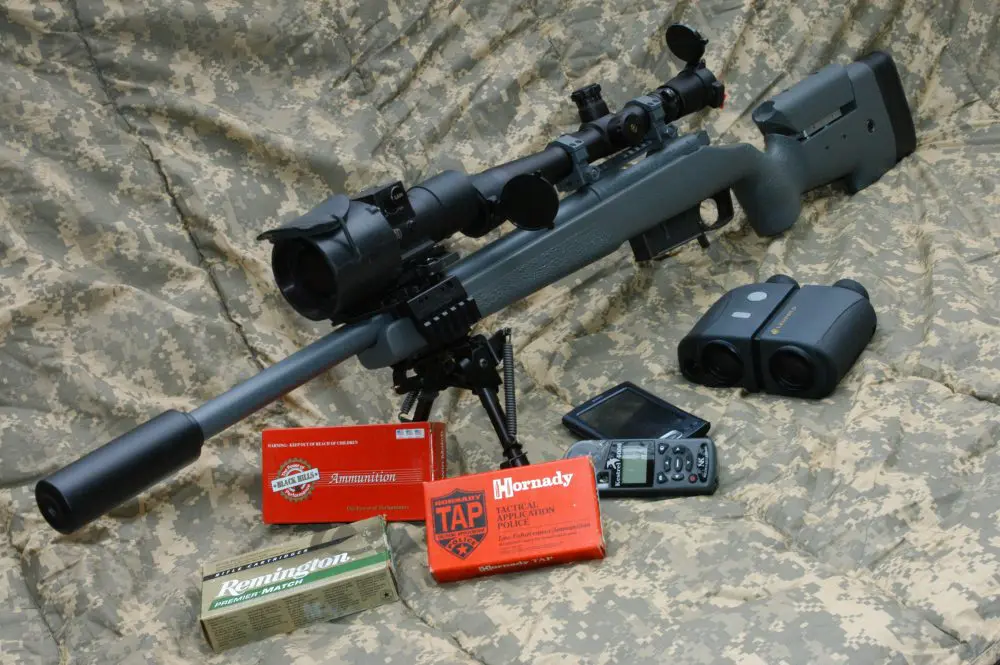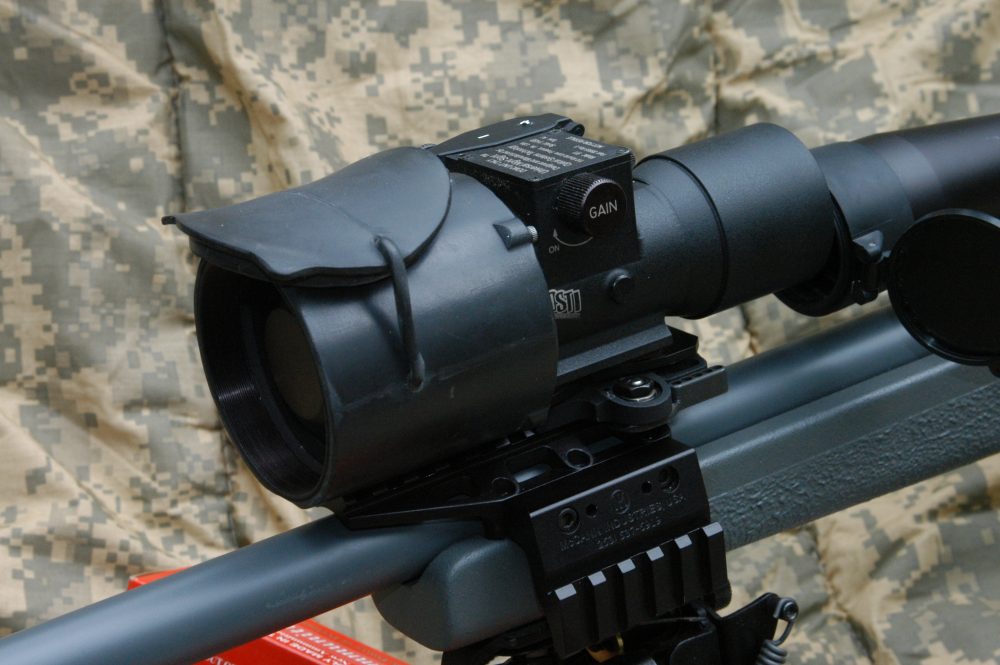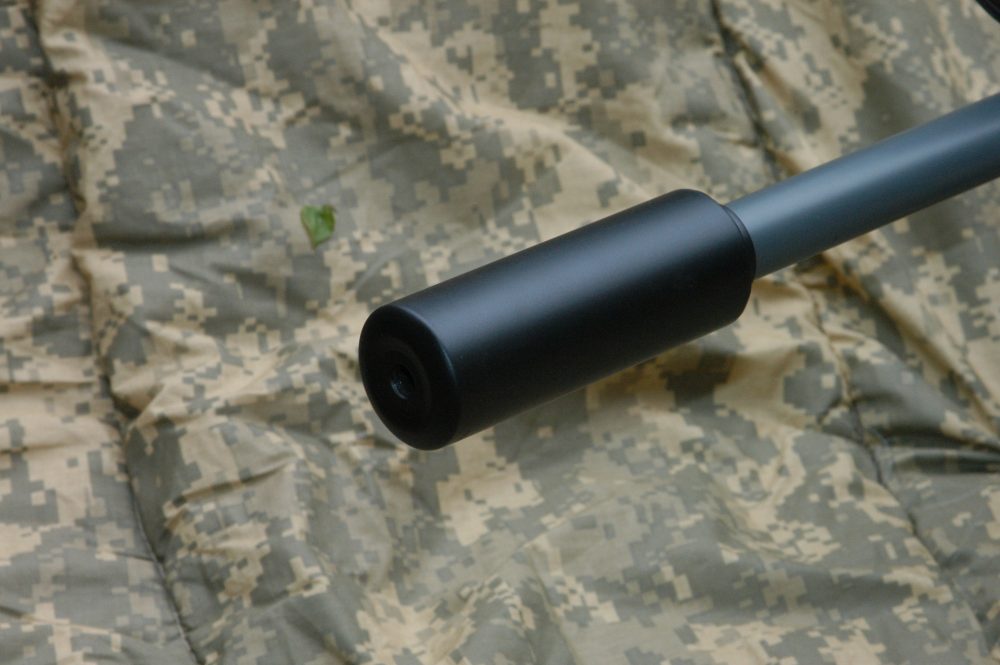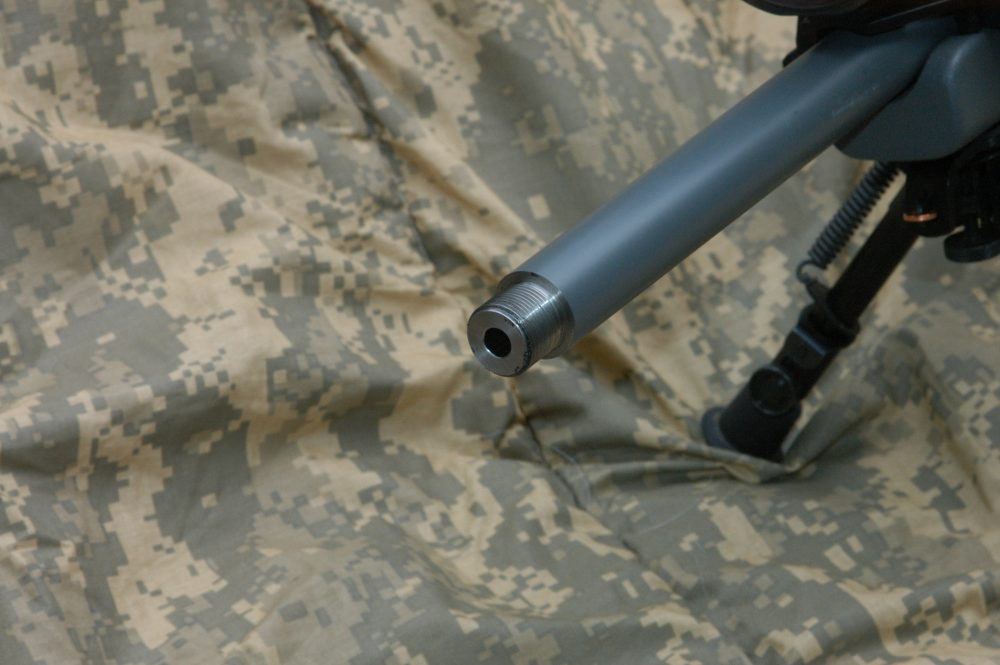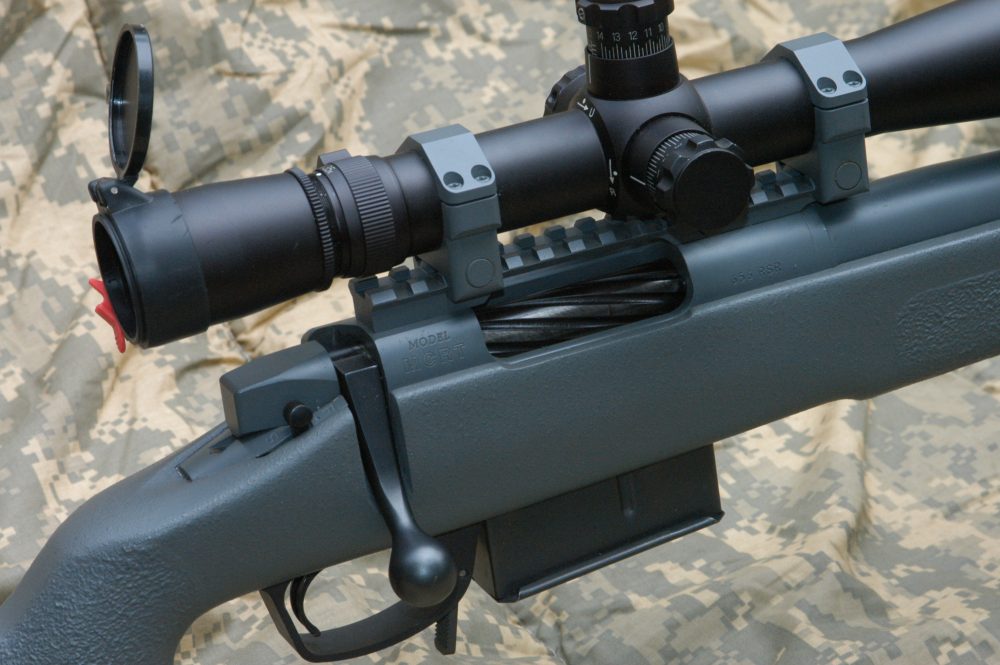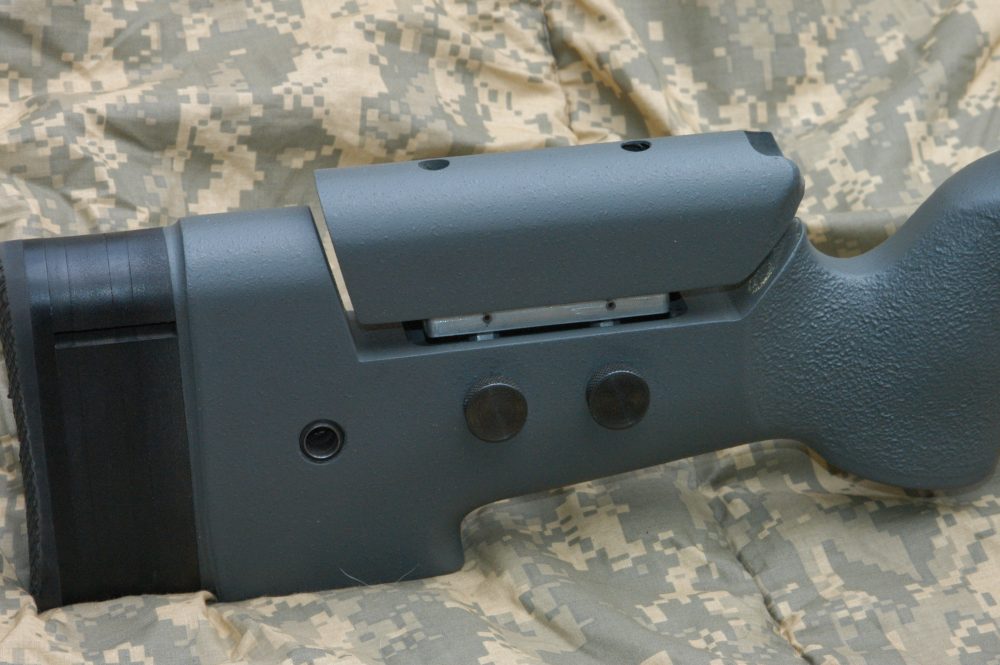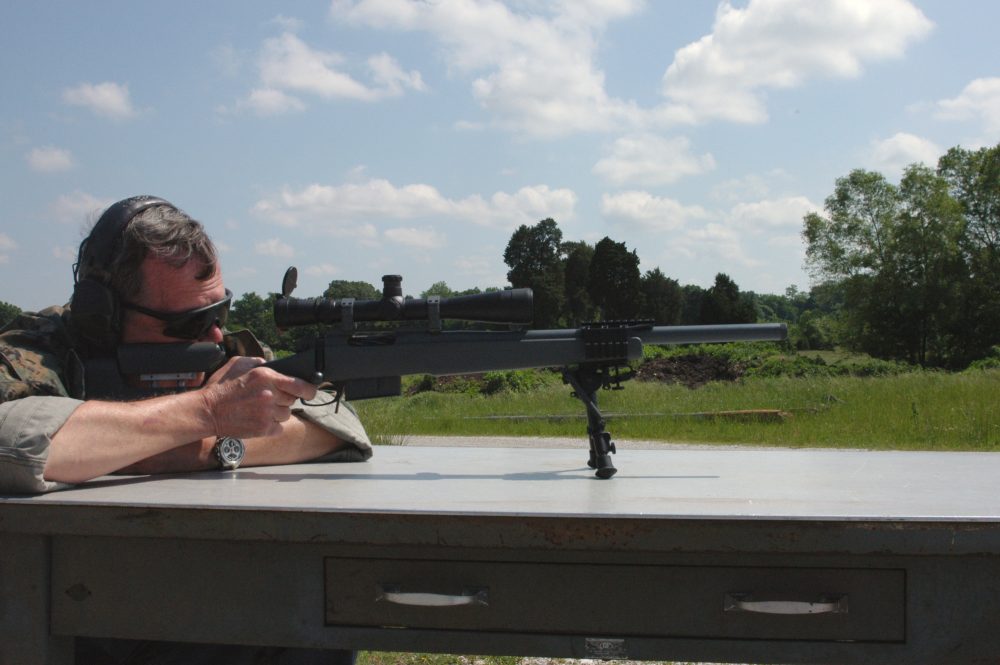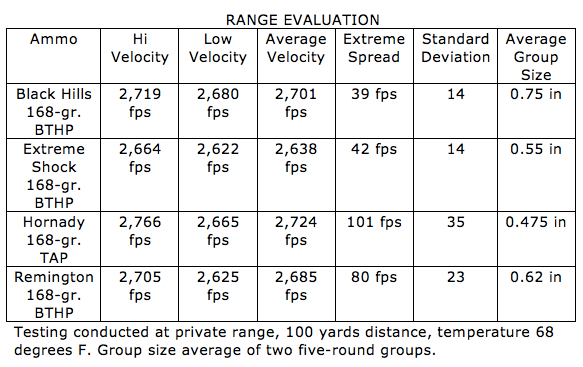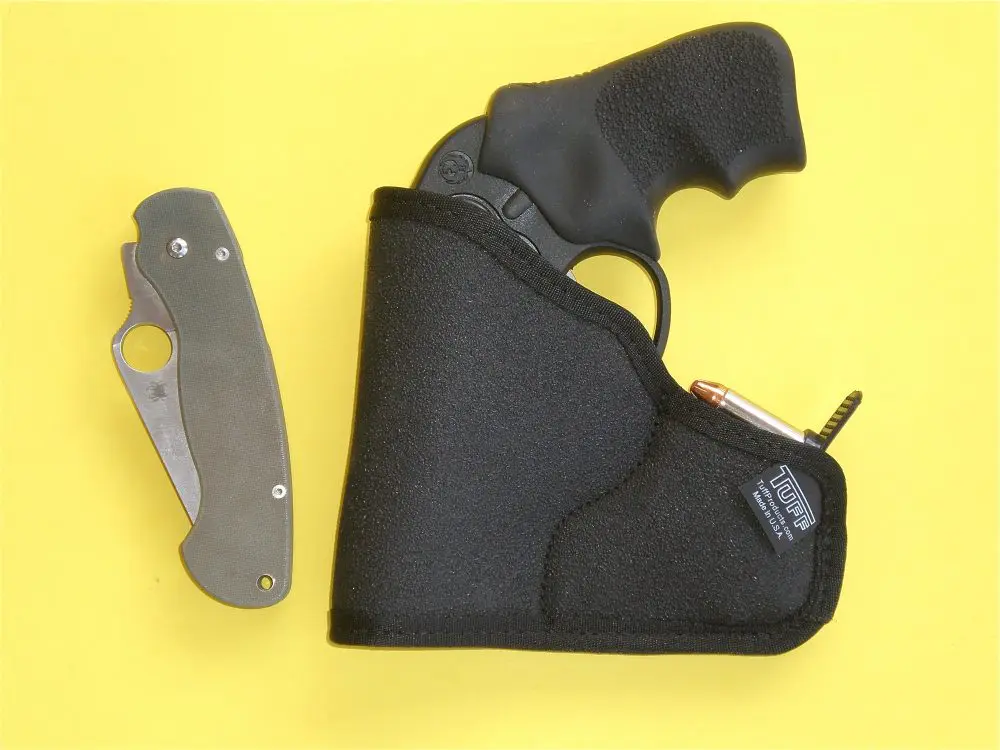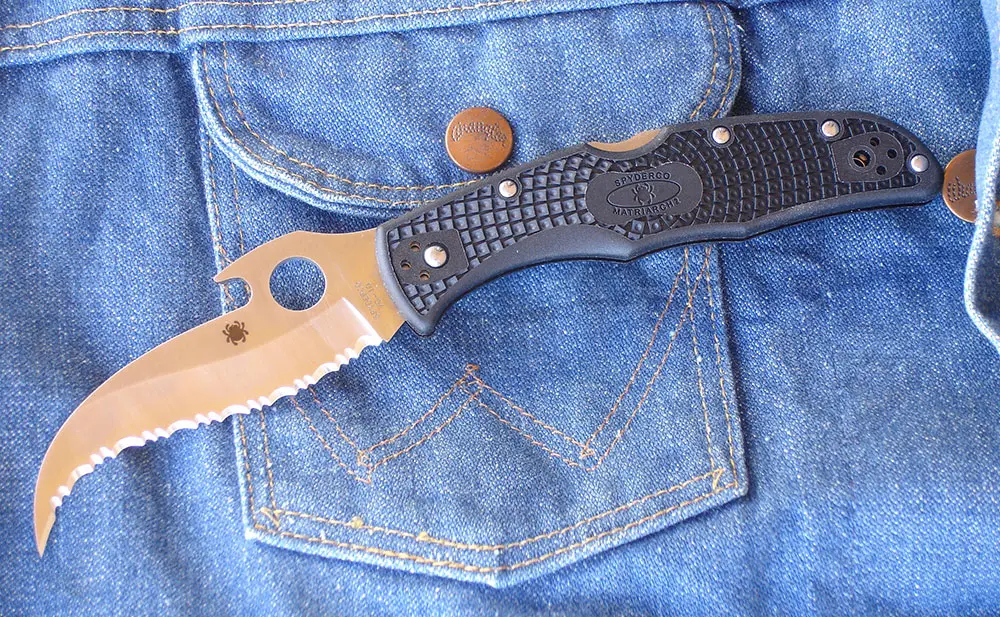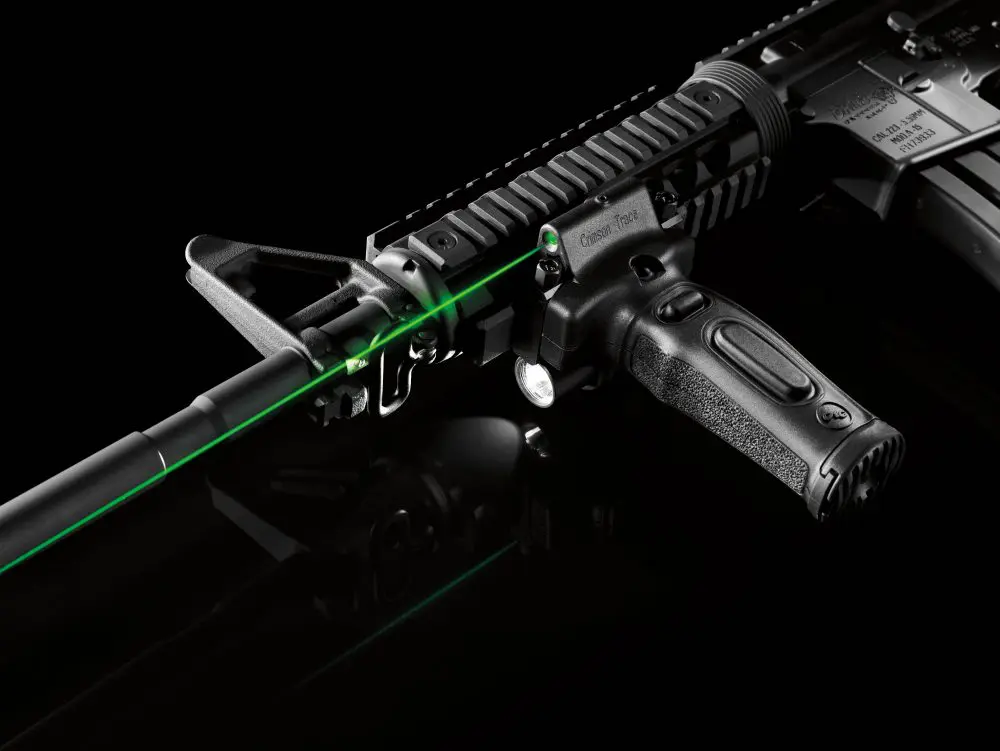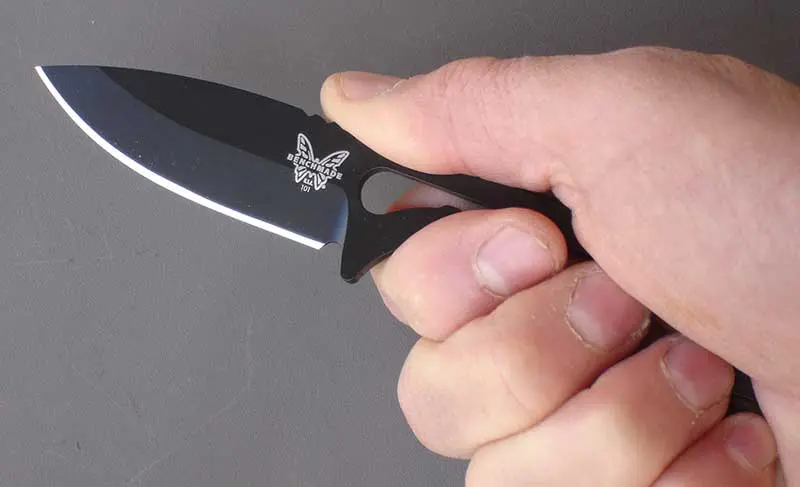When thinking of precision tactical rifles, one of the first names that comes to mind is McMillan. McMillan has established a well-deserved reputation for manufacturing some of the highest quality and most accurate rifles on the planet.
While McMillan manufactures rifles for just about any purpose and chambered in most calibers common for sporting or tactical use, the subject of this evaluation is the McMillan G30 RH (Right Hand) Tactical Rifle. Yes, the rifle is available with a left-hand action as well.
Before we enter our evaluation of this superb shooting machine, I’d like to give a bit of background on McMillan. While the firm is well known to many, there are those who might not be familiar with the company’s history, policies and production methods.
McMillan G30 set up for tactical night mission with Optical System Technology’s AN/PVS-22 night sight, Sound Technology/Yankee Hill Imp suppressor, Kestrel pocket weather station, Palm computer with Horus Vision ballistic software and Leupold RXB-IV 9x32mm Digital Laser Range Finding Binoculars, which give true ballistic range.
McMillan manufactures a complete line of rifles for sports shooters, competitive shooters and military or law enforcement snipers. If a standard McMillan rifle doesn’t meet customer requirements, the company will build a rifle that does, although we can’t imagine a rifle like our test rifle not meeting a law enforcement sniper’s needs!
Rifles are built either on proprietary McMillan actions or on Remington 700 actions. All rifles include a McMillan custom pillar bedded fiberglass stock, match-grade stainless steel barrel, Remington type trigger and are finished in Duracoat. McMillan ensures that every product that leaves their manufacturing facility reflects the McMillan family name. And their personal involvement with the manufacturing process ensures that the McMillan family name continues to maintain its enviable reputation in the firearms industry.
Optical Systems Technology’s AN/PVS-22 Universal Night Sight can be either weapon mounted or handheld and is current U.S. Army standard night vision optic.
The test rifle was McMillan’s top-of-the-line G30 custom action built by the company to aerospace standards, with each action CNC machined from a solid billet. The action material is 17-4 stainless steel, which is tougher and more corrosion resistant than the 4000-series alloy often encountered in firearms. The action steel is hardened to 42-43 Rockwell C. The action face is absolutely perpendicular to the bolt axis. General tolerances are held to 0.005 inch, while critical components are machined to 0.0005 inch. Barrel threads and the chamber are cut to critical tolerances and then hand fitted.
The bolt is made of 9310 steel—even tougher than that used in the receiver—and then is hardened to over 60 Rockwell C. The bolt has spiral grooves to facilitate smooth operation in hostile dust or sand environments. Bolt ways are wire EDM machined rather than broached for cleaner machining, tighter tolerances and smoother feel when the bolt is operated.
Sound Technology/Yankee Hill Imp suppressor greatly reduces both sound and flash signatures, essential for both day and night ops.
Bolt lugs are hand lapped to the receiver to provide equal force and square contact by both lugs. This minimizes side thrust or torque on the action and bedding surfaces. Recoil lugs are surface ground on both sides and pinned to the receiver for a perfectly square match-up between the action face and the barrel shank. The bolt face, barrel shank and receiver completely surround the cartridge case head for added strength.
The extractor on G30 rifles is a large Sako-style “claw” of McMillan’s own design for positive extraction and controlled round feeding. A feature unique to the G30 rifles is dual ejectors. The primary ejector is a Remington-type plunger coupled with a secondary spring-loaded mechanical ejector that rises as the bolt passes over it.
The G30 RH test rifle came to me ready to go with Leupold 3.5–10X scope. Leupold scopes are available with Horus Vision Reticles that are in widespread use by special operations forces and have recently been specified in a USSOCOM requirement for a new sniper rifle. The G30 also was equipped with a Harris bipod and MIL-STD-1913 rails on top and both sides of the forend to allow mounting accessories and state-of-the-art night vision optics such as the AN/PVS-22.
G30’s muzzle is threaded to accept various muzzle devices. Thread pitch is 0.75 in x 20 threads per inch.
In addition to the features listed above, the test rifle had a few extras. The barrel was a 20-inch long, match-grade Schneider stainless barrel, 1:11 twist rate and recessed match crown. The muzzle was threaded to accept a suppressor. As might have been expected, the stock was one of McMillan’s excellent A3-5 types that pillar beds the action and fully free floats the barrel. The stock was gel coated gray and came with adjustable butt spacer system, adjustable cheekrest and Pachmayr Decelerator recoil pad.
The bottom end of the rifle featured a Badger Ordnance trigger housing with two detachable five-round magazines. The Remington style trigger was set to break like the proverbial glass rod at precisely 3.5 pounds. The scope base had a 20 MOA bevel for long-range engagements, although the average law enforcement precision tactical rifle engagement—per FBI data—is only 51 yards.
Spiral grooves in bolt enhance operation in severe dust or sand environments. Detachable box magazine holds five rounds.
When I attended the Chandler/Reifinger Law Enforcement Sniper Course at Blackwater, I was told that I would never be authorized to take a shot at over 150 yards, although we trained to shoot out to 600 yards as confidence and skill building exercises.
In fact, in over 20 years of analyzing the details of every precision tactical rifle engagement available, the American Sniper Association (ASA) could document only two that exceeded 100 yards. One was at 187 yards and the other a verified shot at 225 yards. That’s it. Out of 219 engagements over 20 years, only two exceeded 100 yards. There was another scenario where suspects were engaged at 485 yards, but the law enforcement shooters were not snipers, so the incident wasn’t included by ASA.
This doesn’t mean that we shouldn’t train at longer distances at every opportunity. Engaging targets at longer ranges involves skills that aren’t involved at typical law enforcement distances, which build on the sniper’s skills and enhance his capability to accurately engage targets at typical LE ranges.
G30 stock is McMillan A3-5 type that pillar beds action and free floats rifle’s barrel. Stock is fully adjustable for cheek rest height and length of pull.
As mentioned, Leupold scopes are now available with Horus Vision reticles. Several military special operations snipers of my acquaintance use the Horus H25 tactical reticle. I also used a Leupold 12-40x60mm spotting scope with the same H25 reticle in the evaluation. The matching reticles make second shot corrections a snap. The Leupold scope mated with the Horus Vision reticle should please virtually any military or law enforcement sniper, as the scope’s optics are excellent and the reticle is the most versatile and fastest available for any kind of precision shooting.
The H25 reticle, designed by a sniper instructor specifically for military and law enforcement sniper use, has achieved notable success in both Afghanistan and Iraq and was used by the winners of the U.S. Army Sniper Competition at Fort Benning, Georgia for three consecutive years before being barred because the Horus Vision scopes were considered to give an “unfair advantage” to those who used them.
I don’t know about you, but I want our snipers to have every advantage possible—fair or not! Instead of dialing in clicks of elevation or windage, Horus Vision scopes use a targeting grid that initially looks “busy,” but quickly becomes second nature. The best way to describe it is to compare it to looking through an open Venetian blind.
Cutshaw sends rounds downrange from impromptu bench during accuracy testing. Rifle proved easily controllable, totally reliable and extremely accurate. Trigger was “glass rod” clean and broke at exactly 3.5 pounds.
In use, the shooter generates “come-up” data using the Horus Vision handheld Palm PDA computer or Horus Vision PC ballistic software. The data is transferred to a waterproof adhesive-backed paper card that is used to determine precise holdovers for elevation and windage. If time is available and precision is desired, the PDA can be used to generate specific targeting data, to include elevation and windage holds for the target to be engaged. Once the rifle is zeroed with one load, the handheld computer can be used to generate come-up cards for other loads.
One very important feature of the H25 reticle involves its use with suppressed rifles. This feature enables the sniper to use supersonic or subsonic ammunition interchangeably. The rifleman zeroes his rifle with his load of choice and stores the data in the Horus Vision ballistic program in the Palm PDA. The ballistic data for the subsonic load is then entered and a separate “come-up” card generated. All that’s necessary is to generate a come-up card for any load desired and confirm zero. I have personally used the Horus system out to 1,000 yards and it works!
Another recent Leupold product is the company’s RX™ series of digital laser range finders (LRF), which deliver the rifleman the exact ballistic distance to his target, regardless of slope. Most rifle shooters know that as the angle up or down increases, the true ballistic distance decreases. It is essentially the cosine of a right triangle. Previous devices measured the cosine and read out a factor by which the shooter multiplied to obtain the true ballistic distance. This took precious time, during which the target might go behind cover and disappear.
Leupold’s new 9x32mm RXB-IV Digital Laser Range Finding Binoculars not only function as binocs, but measure the distance and slope angle and instantly give the rifleman both the measured distance and the precise ballistic distance up or down, so he knows his exact hold for target engagement. I believe the new RXB-IV binocs to be one of the most significant recent developments in rifle shooting.
The RXB-IV LRF binocs have an integral compass for azimuth, but that is not necessary for most engagements. The RXB-IVs are waterproof, nitrogen filled and have an effective range of 10 yards/meters to 1,500 yards/meters, depending on target size and reflectivity. I have extensively used the Leupold RXB-IV LRF binoculars shown in this article and recommend them without reservation to any sniper team, either military or law enforcement.
Of course, many engagements are in the hours of darkness, and the sniper may be called upon to engage targets with little or no illumination, so night vision optics are mandatory. Optical System Technology’s Generation 3+ AN/PVS-22 Universal Night Sight (UNS) is current U.S. Army standard. It is also arguably the best all-around piece of image intensifying night vision equipment currently available, because it can be used both as a handheld night vision optic and as a small arms night sight.
The AN/PVS-22 mounts ahead of the day optic. Because of this, the day optic can be used in darkness without reticle illumination and, unlike other night vision optics that must be mounted behind the scope with an adapter clamped to the ocular, eye relief with the AN/PVS-22 is the same regardless of whether or not the night vision device is in use. (Sales of the AN/PVS-22 UNS are restricted to military and law enforcement.)
A suppressor is highly desirable, especially at night, because suppressors reduce not only noise, but also flash. During daylight, the noise reduction makes identifying the source of the shot more difficult, and at night, flash elimination enhances the effectiveness of night vision optics. Although the AN/PVS-22 intensifier tube is autogated, i.e. protected against flash, muzzle flash not only serves to identify the source of the shot, but also makes follow-up shots more difficult due to the brief recovery time the human eye needs to recover from the flash.
For a suppressor, we chose a Sound Technology/Yankee Hill Machine Co. (YHM) Imp model. This suppressor is compact and effective. We should note that McMillan uses an unusual 0.75 x 20 threads per inch pitch on the muzzle, but Sound Technology was able to quickly manufacture a custom suppressor and have it to me for testing within a few days. Sound Technology/YHM have always been able to meet my requirements in very short order with some of the most effective “cans” available.
Shooting the G30 confirmed McMillan’s excellent reputation! Out of all the rifles I have tested over the years, not one has performed with such consistent accuracy with all types of ammunition.
The G30 was essentially a half-minute of angle rifle, no matter what ammunition I used. At the end, the bore was becoming fouled because I had shot nearly 100 rounds through the rifle without cleaning it. Had I cleaned the G30 as I usually do, it probably would have delivered even better accuracy. Needless to say, there were no malfunctions of any sort.
Completely equipped with scope and bipod, the G30 retails at some $5,000. Without accessories, the rifle sells for approximately $3,500. Although this may sound expensive, I have tested rifles that cost more but did not deliver the overall performance of the McMillan.
In short, the McMillan G30 is a rifleman’s rifle and at the price, we consider it a bargain!
SOURCES:
McMillan Tactical Products
Dept. S.W.A.T.
1638 W. Knudsen Dr., Suite 101
Phoenix, AZ 85027
(623) 582-9635
www.mcmillanusa.com
Horus Vision
Dept. S.W.A.T.
659 Huntington Ave.
San Bruno, CA 94066
(650) 583-5471
www.horusvision.com
Leupold & Stevens
Dept. S.W.A.T.
P.O. Box 688
Beaverton, OR 96075
(503) 646-9171
www.leupold.com
Optical Systems Technology, Inc.
Dept. S.W.A.T.
110 Kountz Lane
Freeport, PA 16229
(724) 295-2880
www.omnitechpartners.com
Yankee Hill Machine Co, Inc.
Dept. S.W.A.T.
20 Ladd Avenue, Suite 1
Florence, MA 01062
(877) 892-6533
www.yhm.net
